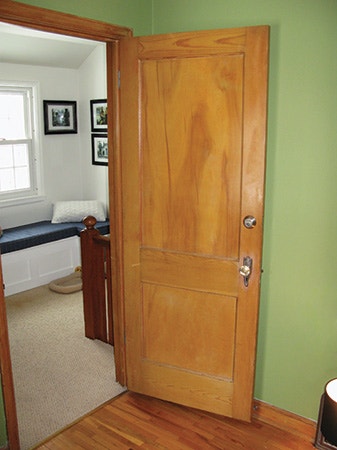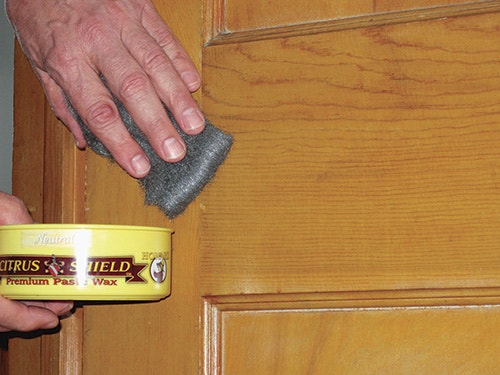How to Repair Scuffed Lacquer
Here's a question I have been trying to solve for years: scuffed lacquer, as in scuffs on a door or cabinet. I actually hoped once that a quick wipe of lacquer thinner would re-melt the finish, but to no avail. Any ideas? Wiping products? — Russ Holmberg
There is a product called "amalgamator" meant to do just that: melt lacquer back to smoothness. The problem is that it consists of a mixture of strong primary solvents, and while it will soften and blend a finish, it will take it completely off just as easily. Because it is so tricky to use, the one company I know of that is selling it tries to restrict its sale to professional finishers. Fortunately, there are easier reliable methods.

If the lacquer is thick enough, you can buff out scuffs with either rubbing and polishing compound, for gloss lacquer, or with 0000 steel wool and paste wax, for satin finishes. With lacquer that's not thick enough to buff, you can clean the surface, sand lightly to blend out the scuffs, then go over it with another coat of the same type of lacquer.

Nitrocellulose and most acrylic lacquers re-melt themselves with each coat. That means a wet coat will soften and blend into the old lacquer, effectively flowing out and hiding the scuffs. Many repair folks, in cases like this, pre-spray the finish with a thin coat of retarder, or even just lacquer thinner, prior to spraying the coat of lacquer. This will help soften and flow the surface, making it more likely to hide unsightly scuff marks.
Keep the inspiration coming!
Subscribe to our newsletter for more woodworking tips and tricks






